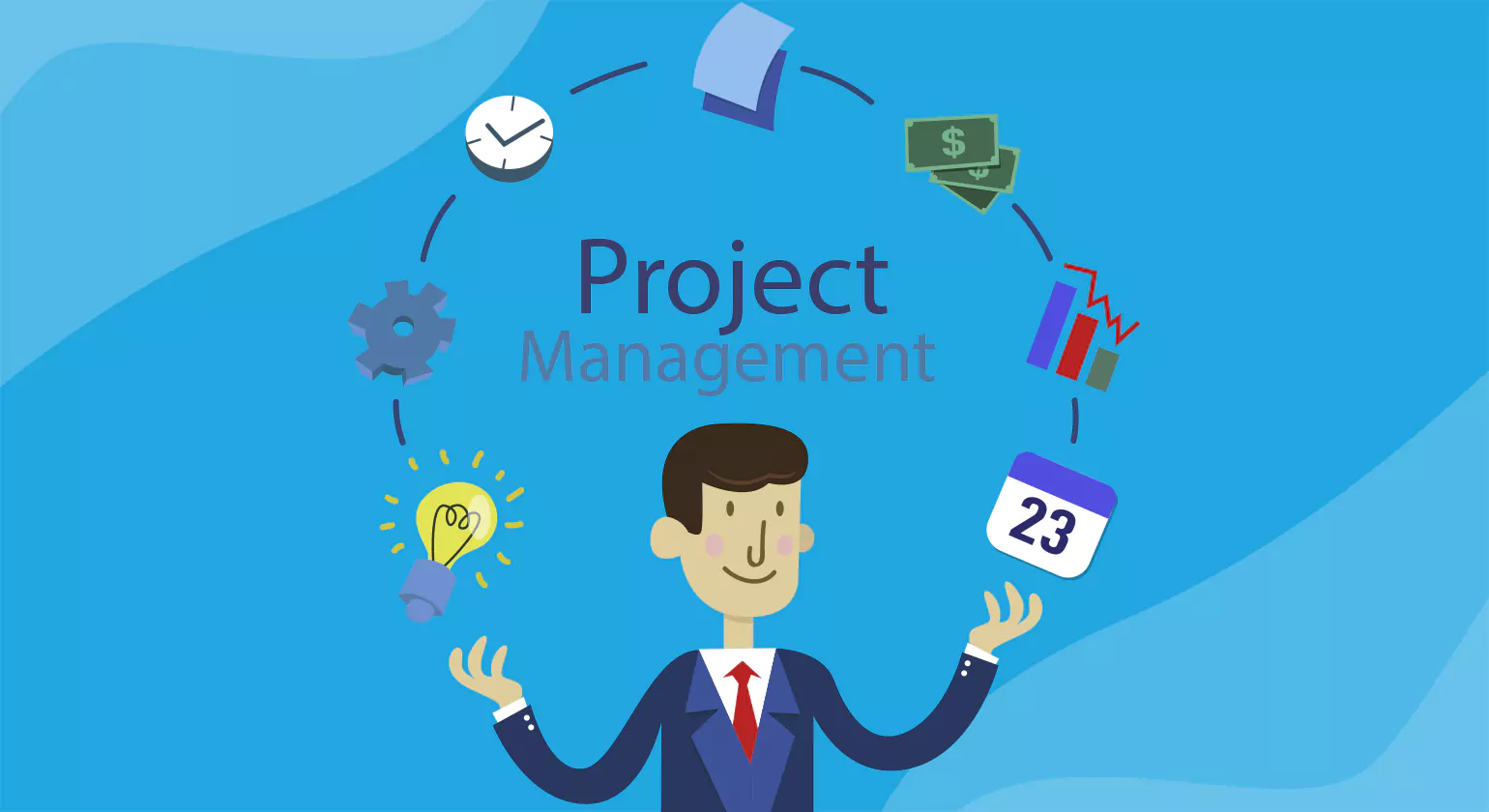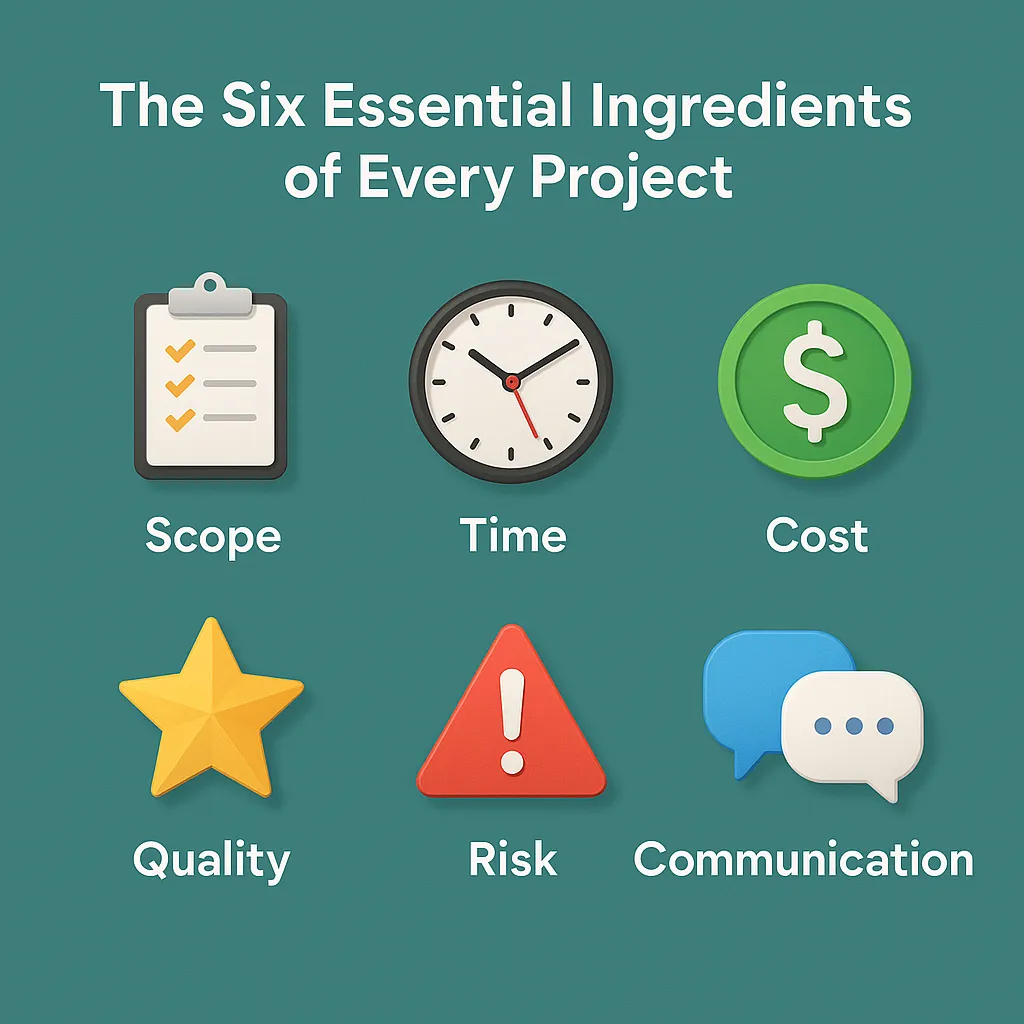
Have you ever had a brilliant idea but watched it fall apart because no one knew who was doing what, or when? That’s what project management is for.
In a nutshell, Project Management is the organized way to take an idea and turn it into a successful reality, without chaos. Whether you’re launching a new product, building a house, or just trying to get that huge presentation finished, this discipline brings the planning, teamwork, and accountability you need. It’s the engine that powers modern business.
This guide breaks down what project management really means, why it’s not as boring as it sounds, and how it’s the key to making your goals happen on time and on budget.
Table of Content
- What Is Project Management, Really?
- The Six Essential Ingredients of Every Project
- The 5-Step Project Roadmap (The Project Life Cycle)
- The Project Manager: The Unsung Hero
- How to Do the Work: Popular Project Methods
- The Payoff: Why Bother with Project Management?
- Final Takeaway
What Is Project Management, Really?
Think of project management as the GPS for your big goals.
It’s the process of guiding a temporary effort (a project) from the starting line to the finish line to create something unique—whether that’s a new app, a massive fundraising event, or just a better way to organize your office.
A key difference is that a project isn’t your daily routine. It has a clear beginning and a clear end. Project management makes sure that during that journey, you can balance the many factors—like time, money, and quality—to deliver a result everyone is happy with. It takes the guesswork out of achieving complex results.
The Six Essential Ingredients of Every Project
Project Managers often call this the “Project Management Triangle,” but let’s call it the six ingredients you need for a successful recipe. If you mess with one, the others will change, too.

- Scope: What are we making?
- This defines the finish line. It’s what you promise to deliver. The goal is to prevent “scope creep”—when small, extra requests keep sneaking in and derail the whole plan.
- Time: When will it be done?
- This is your schedule. It means breaking down the work, setting deadlines for key tasks (milestones), and making sure you hit those dates.
- Cost: How much will it cost?
- Your budget! This involves accurately guessing the expenses upfront and keeping a tight leash on spending.
- Quality: Is it good enough?
- This ensures the final product or service meets the required standards. It’s about delivering what was promised, and making sure it actually works well.
- Risk: What could go wrong?
- No project is perfect. This is about spotting potential problems (like a key team member quitting or a supplier delivering late) before they turn into big crises, and having a backup plan.
- Communication: Who needs to know what?
- Keeping everyone—the client, the team, and your boss (stakeholders)—in the loop. Clear, regular updates minimize drama and keep the whole team pointed in the right direction.
The 5-Step Project Roadmap (The Project Life Cycle)
Every project generally follows these five logical steps:

1. The Idea Takes Shape (Initiation)
This is the kickoff. You figure out why you’re doing the project and if it’s even possible. You define the basic goals and get approval or funding from the people who hold the purse strings.
- Key Activity: Writing a simple project charter that defines success.
2. The Detailed Plan (Planning)
You know what you’re building, so now you figure out how. This is the heaviest phase, where you create the master blueprint for everything: the schedule, who’s doing what, how much money is allocated, and all the “what if” scenarios (risks).
- Key Activity: Building the schedule and budget.
3. Let’s Get to Work (Execution)
This is the action phase! The team is busy building, coding, installing, or writing. The project manager’s job here is to keep the energy up, clear obstacles for the team, and make sure everyone has the resources they need.
- Key Activity: Managing the team and coordinating tasks.
4. Are We on Track? (Monitoring & Control)
This phase happens at the same time as Execution. It’s the constant checking of the GPS. You track progress against the plan, watch the budget, monitor quality, and adjust if you start falling behind.
- Key Activity: Tracking performance metrics and making changes (change management).
5. Final Handover (Closure)
You finished! Now you wrap everything up cleanly. This involves delivering the final result to the client, formally closing contracts, and conducting a “lessons learned” session to figure out what worked and what didn’t for next time.
- Key Activity: Getting final sign-off and documenting all the lessons.
Recommended Courses to Strengthen Your Project Management Skills
Take your learning beyond the basics with these top-rated courses designed to help you plan, execute, and lead projects with confidence:
- ChatGPT for Project Management – Discover how AI can streamline workflows, boost productivity, and enhance project decision-making.
- Project Management: The Basics for Success – Learn the core principles of managing time, cost, and quality while leading effective teams.
- Introduction to Project Management – Build a strong foundation in planning, scheduling, and stakeholder communication.
- Engineering Project Management Specialization – Master complex project coordination in technical and engineering environments.
- Capstone: Applying Project Management in the Real World – Put your knowledge into practice with hands-on, real-world project simulations.
The Project Manager: The Unsung Hero
A Project Manager (PM) is the person who bridges the gap between the people with the vision and the people who do the work. They’re not usually the person who builds the thing, but they are the one who ensures it gets built correctly.
- Their Job: They are the chief organizer, motivator, risk-spotter, and communicator. They take complex problems, break them down into manageable pieces, and guide the team through the chaos.
Essential PM Superpowers
| Skill Category | What It Really Means |
| Leadership | Inspiring people, not just ordering them around. |
| Communication | Explaining complex things clearly to clients and the team. |
| Problem-Solving | Staying calm and finding creative ways around roadblocks. |
| Organization | Juggling all the tasks, files, and deadlines without dropping anything. |
| Adaptability | Handling curveballs and uncertainty like a pro. |
How to Do the Work: Popular Project Methods
There isn’t one “right” way to manage a project. The method you choose depends on how much you know at the start.
| Methodology | Best for… | The Human Element |
| Waterfall | Projects where you know everything up front (like building a bridge or a house). | It’s a highly structured “Plan-Do-Check” approach. Very little room for surprises. |
| Agile | Projects where the requirements change often (like software development or product design). | It’s all about flexibility, quick feedback, and continuous improvement. |
| Scrum | A specific type of Agile that uses short, intense work periods called “Sprints” (usually 2-4 weeks). | Emphasizes daily, face-to-face team check-ins (stand-ups) for total transparency. |
| Kanban | Managing an existing workflow or service desk (like managing a publishing pipeline). | A visual system (like Trello or a whiteboard) that focuses on limiting work in progress to boost efficiency. |
- Understanding project management frameworks is just the first step. To see how modern methods reshape team performance, explore How Agile Project Management Transforms Teams and Boosts Business Performance, which highlights real-world Agile practices.
- For those managing multiple projects simultaneously, The Ultimate Guide to Program Management explains how to align initiatives strategically and improve coordination.
- Change is inevitable in any project — The Ultimate Guide to Change Management outlines the models and best practices that help teams adapt successfully.
- Finally, for effective people and asset planning, read What Is Resource Coordination in Incident Management to understand how seamless coordination supports project success.
The Payoff: Why Bother with Project Management?
Using good project management isn’t just about making managers happy; it’s about making everyone’s life better:
- You Finish Faster: Clearly defined timelines stop tasks from endlessly dragging on.
- You Save Money: Planning forces you to estimate costs accurately and stick to them.
- Less Stress: Proactively spotting risks and having backup plans means fewer midnight emergency calls.
- Happier Clients: Projects that are transparent and delivered on time build trust.
- Stronger Teams: Clarity on roles and objectives means less internal confusion and better teamwork.
Tools of the Trade (Your Digital Toolkit)
No one uses paper charts anymore! Project Managers rely on software to keep everything organized:
- Trello or Asana: Great for simple, visual task tracking and team coordination.
- Jira: The go-to tool for tech teams using Agile and Scrum.
- Monday.com: An all-in-one platform for complex projects and reporting.
The future of project management is getting even smarter, with AI and automation stepping in to help predict problems and automatically update schedules!
Final Takeaway
Project management takes a massive, daunting goal and turns it into a series of achievable steps. It’s the difference between hoping for success and planning for success.
In a world that moves fast, the ability to bring order to the chaos and consistently deliver results makes project management one of the most valuable skills you can have.


